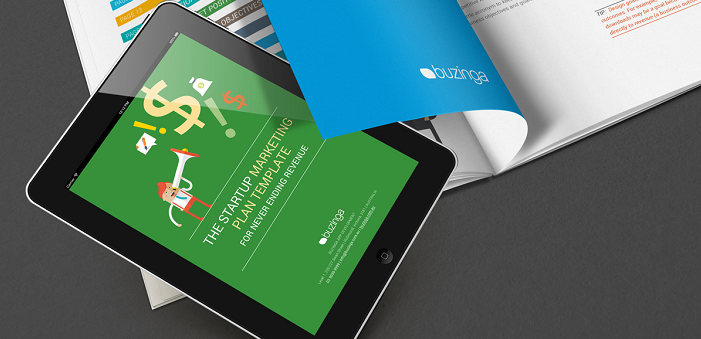5 Most Common Mistakes in Mobile App Marketing
Mobile has changed the way we run our lives – It connects people whenever & wherever…
This has challenged marketers to create solutions and ideas that match the customers’ preferences for doing everything (well almost!) through their mobile apps.
With this new avenue, we see new ways for marketers and retailers to connect and create value for their products. However, most marketers are still making some pretty fundamental mistakes.
In this article I want to make sure that you’re aware of these common mistakes so that you can avoid them – and kick some ass.
Let’s take a look at the 5 most common mistakes in mobile app marketing:

Mistake # 1: Apps are just Mini-Websites, Right?
The Truth:
An app should never be treated as a simplified version of a website. The mobile ecosystem has rapidly evolved over the last few years. As a result, solutions for bringing personal mobile experiences have sprung up all over the place.
This places a bigger responsibility on app developers and marketers to use mobile as a separate space for providing the best possible user experience from mobile through native apps.
What To Do:
While your website may be complete platform, you still need to adjust to the limited computing capabilities of mobile firmware.
Keeping this in mind, design your app to tackle a limited number of requirements rather than try to pack everything into an app that eventually becomes too heavy that loading and processing time goes through the roof.
Remember also that the smartphone screen sizes is much smaller than that of a desktop computer, or even a laptop. In other words, you can only fit so much information on such a small screen.
App design should have the following:
-
Minimalist User Interface
-
Optimally sized fonts
-
Single or max double tone colors

Mistake # 2: App Development First, then Marketing later!
The aim of marketing is to know and understand the customer so well the product or service fits him and sells itself – Peter Drucker
An app’s success is measured by the number of downloads it gets. However before dreaming up impressive download figures, it would be wise to spend an excessive amount of planning (and more planning) on how the app needs to be marketed.
The first source of knowledge sharing about a new app to hit the markets should be from the company via press release, blogs and social media.
Unfortunately, many sources of app discovery remain untapped or not tapped to their fullest extent just because developers choose to ignore titles, applicable keywords or descriptions.
What To Do:
Your website should be the first choice of promoting your upcoming app release. You can also use social media sites such like Facebook, Twitter and Instagram to build ongoing interest a few weeks before app release.
The more channels you use to advertise your app release, the better chances are of its success. You should use the following to get the word out:
- Company Blog
- Guest Posts
- Published Reviews
- Video App reviews
Developers should never neglect this small but essential part of the app post-release activities.

Mistake # 3 – A Mobile Website is an App
The Truth:
With more than a million apps on the AppStore alone, the standard for app publishing is now extremely high. This new generation of app-savvy customers demand nothing but the best out of new apps.
Some developers try to do a workaround by simply having a front page for an app and the rest of the content redirected to a mobile website of the organization.
Trying to pass off a mobile website as an app is not going to benefit neither your customers nor your app’s marketing campaign. If you truly understand what the difference between the two, it will be clear that native apps have their distinct merits that cannot be replicated by a mobile website.
What To Do:
The main hurdle that prevents developers from creating a native app is usually the development budget. Instead, focus on one platform that is majorly used by your targeted audience and then do native app development for that platform.
This will give you an understanding of what works and what doesn’t with your customers. If you have to really target multiple platforms at the same time, use a cross platform app development that will give a consistent look and feel.

Mistake # 4 – Customers will make my app “Go Viral”
The Truth:
You exist for the needs of your customers and not the other way round.
The core of mobile app success is how it’s involved in everyone’s personal lives.
Mobile apps nowadays are so integrated in the consumer’s psychology – to a degree that it influences people’s decision making.
For example, branded shopping apps (like Jack Threads or Asos) will easily gather favor from mobile consumers.
Why?
These apps provide an easier way to view clothes, check for deals and possibly buy instantly.
If people don’t see a reason for using your app, they wo’nt hesitate a second before they move to the next app that does provide their needs.
What To Do:
Always remember that as long as smartphone users have their mobiles in their pockets, every second counts – towards closing the deal.
User retention is a critical success differentiator in mobile application marketing, as supported by data that says that 90% of the users drop out of the app within the first 6 months. (Some even less)
Luckily there are quite a few things that can be done by the marketers to get this particular aspect bang on target:
- Use Design to guide User Experience
- Understand your Target Audience (understand their likes, create brand personas)
- Sustained Online Visibility (frequent engagement sessions with app customers so that they feel valued and thus gain loyalty for the app.)
- Provide Rewards and Incentives (Discounts, deals, reward packs)

Mistake #5: My App is Perfect, No Customer Feedback required!
The Truth:
Your most unhappy customers are your greatest source of learning. – Bill Gates
With virtually no mode of communicating back with the development team behind an app, mobile customers find it nearly impossible to share their experiences and this is one of the costliest mistakes a developer can commit.
Today’s consumer wants his/her voice to be heard and acted upon. It is not okay with simply pushing the app down one’s throat. Customers are well aware of the need to share their feedback, perspective, views and queries. In case of absence of such a medium, companies run the risk of losing the customer forever to competition.
What To Do:
Apps should at least have in-app feedback at key sections (after a game is over, customers is redirected to a new link etc.) This will make sure that your development time is well invested and customers gets to voice out their issues, concerns, good points etc.
Customers feel valued when they know that their voice is being heard. Retailers who listen to their customers benefit from enhanced retention, continuous feedback, bigger loyalty and better publicity, all of which go on to make their product better.
Conclusion:
Mobile is a very personal communications channel that needs to be prioritized by marketing companies. So keeping an eye on these mistakes will definitely help the development team and marketers to create a successful mobile app marketing strategy.
Put together a powerful marketing plan with our template below…
Latest posts by Logan Merrick (see all)
- Ep 18: Collective Campus’ CEO on Intrapreneurship and Corporate Innovation - December 20, 2016
- 50 User Engagement Strategies For Planning Memorable Mobile Experiences - December 19, 2016
- Latest Data: App Monetisation Trends And Drivers 2015-2020 - November 25, 2016




